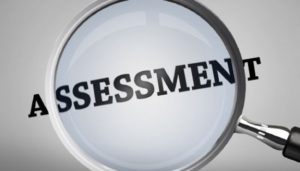
This question addresses an often-neglected aspect of thorough strategic planning. Having described your preferred future, it would seem to make a lot of sense to determine if your organization has the capacity to actually achieve that future. In other words, does your organization have the necessary resources, processes, policies, and infrastructure to effectuate the plan and arrive at the desired position? And along the way, can your organization adapt and respond to emerging challenges and opportunities, both of which also require organizational capacity?
A capacity assessment is different than a traditional SWOT analysis, although it could possibly be used here with some effectiveness. In most traditional strategic planning processes, SWOT analysis is conducted at the outset, with the unfortunate result that the desired future position is shaped by an understanding of weaknesses and threats, instead of a thoughtful regard for opportunities in an anticipated future. Furthermore, because every organization has capacity in varying degrees in different areas, pigeon-holing elements of capacity into the strengths, weaknesses, opportunities, or threats boxes creates false dichotomies and renders absolute judgments without recognizing gradations in strength.
Regardless of the method employed (and I will share a number of such methods below), it is important that every aspect of the organization be considered. Allison (pp. 158-163) lists “eight areas of operations [that] are most relevant for strategic planning: (1) human resources, (2) organizational structure and culture, (3) financial management, (4) resource and business development, (5) external communications, (6) information technology, (7) facilities and equipment, and (8) planning and evaluation.”
 Thigpen (2007) in her work at the Center for Nonprofit Leadership at Adelphi University expanded the list and created questionnaires for each of the following: mission, board governance, planning, resource development, external relations, administration and management, executive leadership, finance, human resources, program planning and evaluation, and space, facilities and technology. Individual questionnaires were created for each area along with suggested interviewees to ensure valid and knowledgeable input.
Thigpen (2007) in her work at the Center for Nonprofit Leadership at Adelphi University expanded the list and created questionnaires for each of the following: mission, board governance, planning, resource development, external relations, administration and management, executive leadership, finance, human resources, program planning and evaluation, and space, facilities and technology. Individual questionnaires were created for each area along with suggested interviewees to ensure valid and knowledgeable input.
Using most of these same categories, the Marguerite Casey Foundation developed an assessment tool that groups 59 questions into four broad categories of capacity: leadership capacity, adaptive capacity, management capacity, and operational capacity. Their questionnaire requires participants to select one of four narrative descriptors for each item, thereby ranking capacity in levels 1, 2, 3 or 4.
Levinger and Bloom developed an easy-to-use tool called the Simple Capacity Assessment Tool (SCAT) which engages staff and other stakeholders in rating criteria as “nascent,” “emerging,” “expanding,” or “mature.” Their seven areas of assessment are: governance, management practices, human resources, financial resources, service delivery, external relations, and partnering. One interesting aspect of this tool is that stakeholders are involved in developing additional criteria under each subcategory, thereby customizing the tool to consider the unique aspects of the organization.
One of the most widely used on-line assessment tools comes from the McKinsey Foundation. The Organizational Capacity Assessment Tool (OCAT) evaluates nine areas using 123 questions. Similar in construction to the Marguerite Casey Foundation questionnaire, four descriptors are provided for each item.
- Aspirations
- Strategy
- Leadership, staff and volunteers
- Funding
- Values
- Learning and innovation
- Marketing and communication
- Managing processes
- Organization, infrastructure and technology
- Advocacy (optional)
Several advantages present themselves by using the OCAT. Responses are tabulated automatically and the results are published in the form of a comprehensive report. Not only is capacity measured in a rating scale, but an indication of consensus is provided to indicate the extent to which participants were close or disparate in their responses. Those areas which were high or low in capacity are also color coded. The report provides recommendations for “low hanging fruit” and areas of strength upon which to build. Agendas and templates for planning committee meetings are provided. Graphic images depicting the status of the organization in the various areas are helpful for achieving shared understanding of the overall capacity. Finally, the option for a tenth criterion, advocacy, is provided for those nonprofits that have a budget and staff for that function.
Last, numerous state nonprofit associations have developed capacity assessment tools for member organizations. I noted interesting approaches from New Hampshire, Oregon and Michigan, but I did not take the time to examine all fifty states. Some of these tools are free and accessible on-line. Others are available to members only. It would certainly be worthwhile to investigate which resources are available in your state.
 Regardless of how the capacity assessment is conducted, the results need to be carefully reviewed with an eye toward answering the critical question, “Can we get there?” Your dreams for a preferred future will turn into disillusion and disappointment if you don’t attend to your organization’s limitations. My preferred future of being able to dunk a basketball, for example, has to take into consideration my 67 year old knees. My brain may say “jump” but my body is just not going to do what I wish it could. If you lack the capacity to execute the tactical action plans needed to realize the future position you aspire to, attention must be given to building up those areas before you can reasonably hope to move forward. Conducting a thorough capacity assessment is an important step to being able to realize that future. The results of such an assessment may even cause you to rethink some of the positions you aspire to, recognizing the difference between the possible and the plausible, as I discussed in last week’s article.
Regardless of how the capacity assessment is conducted, the results need to be carefully reviewed with an eye toward answering the critical question, “Can we get there?” Your dreams for a preferred future will turn into disillusion and disappointment if you don’t attend to your organization’s limitations. My preferred future of being able to dunk a basketball, for example, has to take into consideration my 67 year old knees. My brain may say “jump” but my body is just not going to do what I wish it could. If you lack the capacity to execute the tactical action plans needed to realize the future position you aspire to, attention must be given to building up those areas before you can reasonably hope to move forward. Conducting a thorough capacity assessment is an important step to being able to realize that future. The results of such an assessment may even cause you to rethink some of the positions you aspire to, recognizing the difference between the possible and the plausible, as I discussed in last week’s article.
Next week, I’m going to talk about the importance of measuring performance as you answer the question: “How will you know if you get there?”
As always, your thoughts and comments are welcome.
References
Allison, M. and Kaye, J. Strategic Planning for Nonprofit Organizations. (2015). John Wiley and Sons, Hoboken, NJ.
Levinger, B. and Bloom, E. A Simple Capacity Assessment Tool (SCAT). Developed for the Global Development Research Center, can be found at: https://www.gdrc.org/ngo/bl-scat.htm
_____ Organizational Capacity Assessment Tool. Developed by the Marguerite Casey Foundation for use by nonprofit organizations, is found at: http://caseygrants.org/resources/org-capacity-assessment/
_____ Organizational Capacity Assessment Tool (OCAT). Developed by the McKinsey Foundation for use as an online tool, complete with analysis and reporting, found at: http://mckinseyonsociety.com/ocat/
_____ Self-Assessment Tool for Nonprofit Organizations. Developed by the Oregon Association of Nonprofit Organizations. The tool and its assessment grid are found at: https://nonprofitoregon.org/sites/default/files/uploads/file/NP%20Org%20Self%20Assessment_0.pdf
Thigpen, A. Organizational Assessment. (2007) Developed for the Center for Nonprofit Leadership at Adelphi University, School of Social Work. The tool is available at: http://nonprofit.adelphi.edu/resources/organizational-assessment/




